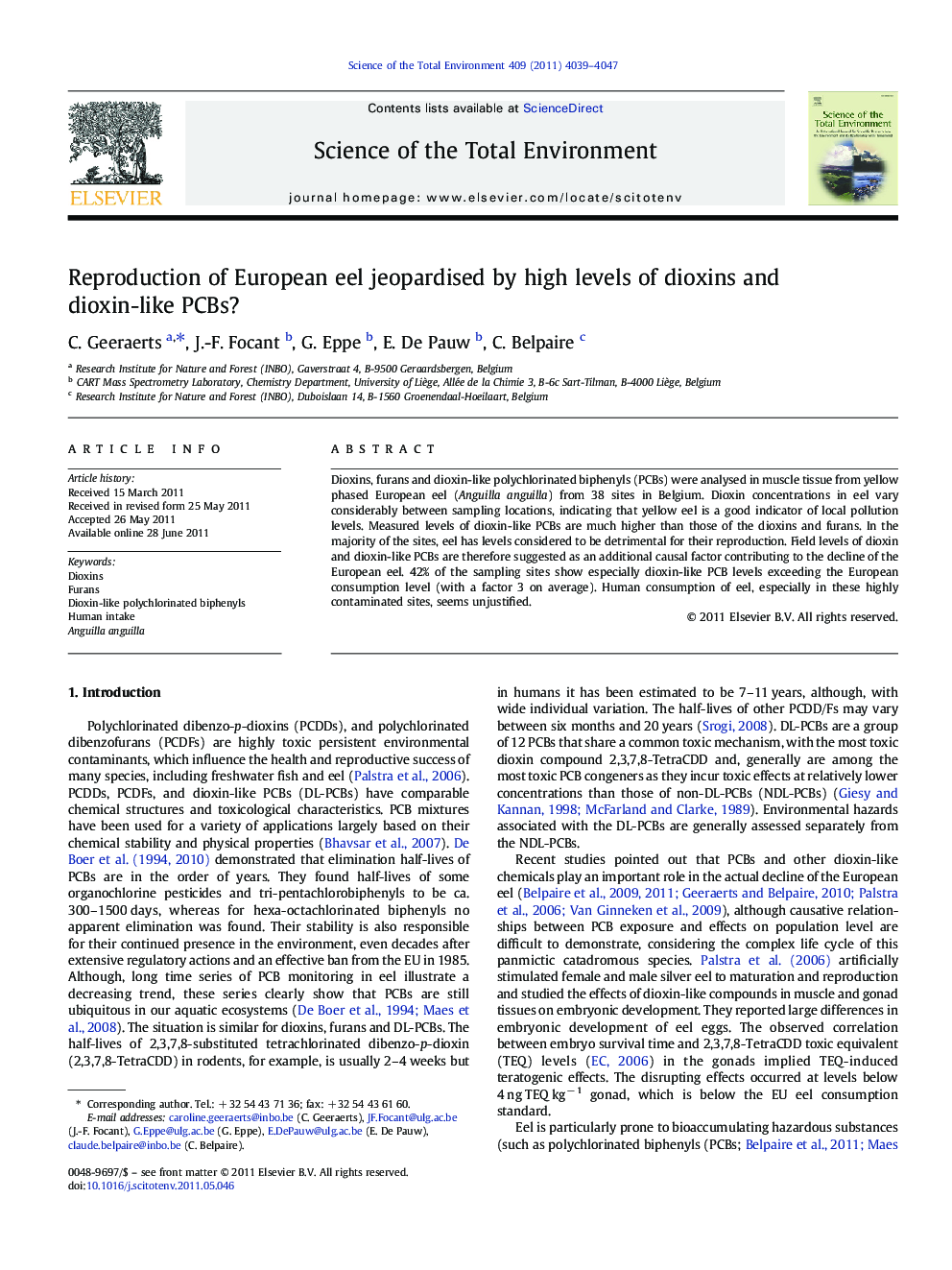| Article ID | Journal | Published Year | Pages | File Type |
|---|---|---|---|---|
| 4430059 | Science of The Total Environment | 2011 | 9 Pages |
Dioxins, furans and dioxin-like polychlorinated biphenyls (PCBs) were analysed in muscle tissue from yellow phased European eel (Anguilla anguilla) from 38 sites in Belgium. Dioxin concentrations in eel vary considerably between sampling locations, indicating that yellow eel is a good indicator of local pollution levels. Measured levels of dioxin-like PCBs are much higher than those of the dioxins and furans. In the majority of the sites, eel has levels considered to be detrimental for their reproduction. Field levels of dioxin and dioxin-like PCBs are therefore suggested as an additional causal factor contributing to the decline of the European eel. 42% of the sampling sites show especially dioxin-like PCB levels exceeding the European consumption level (with a factor 3 on average). Human consumption of eel, especially in these highly contaminated sites, seems unjustified.
► Dioxins, furans and dioxin-like PCBs are still ubiquitous in aquatic ecosystems. ► The DL-PCB concentrations are much higher than those of the PCDD/Fs. ► Measures to limit consumption of fish from the most polluted areas must be taken.
